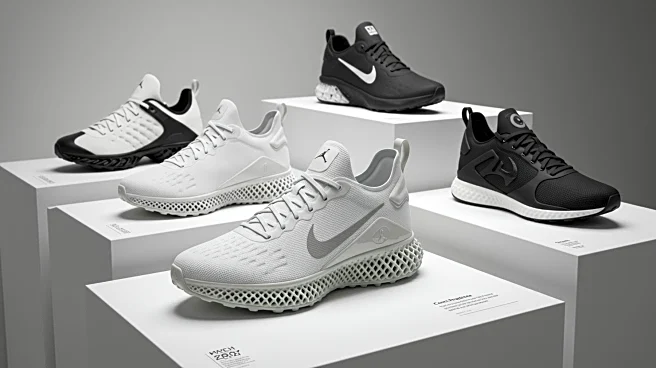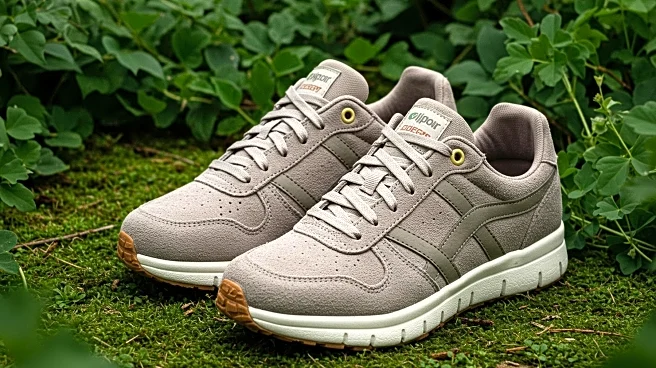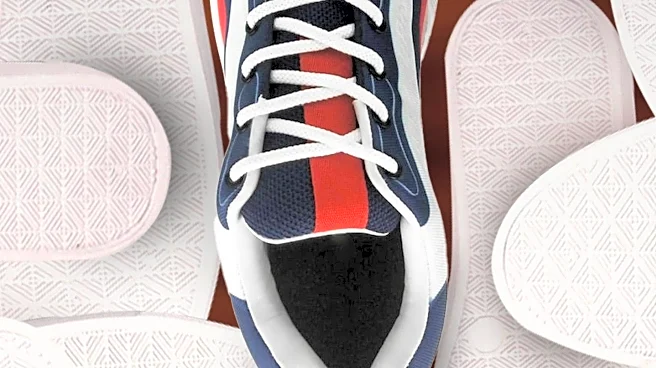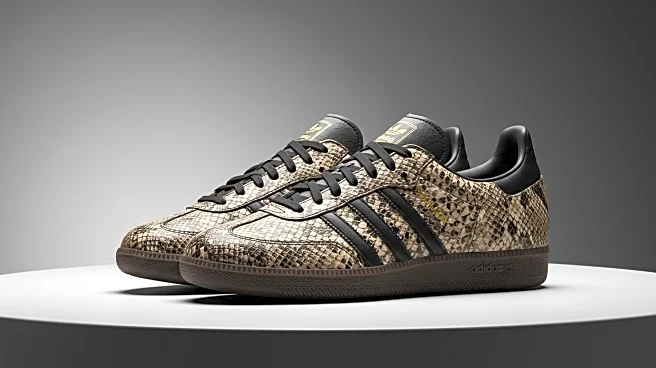What is the story about?
What's Happening?
Zellerfeld, a German 3D-printing footwear brand, has been actively expanding its presence in the fashion industry through various collaborations this summer. The brand has partnered with notable designers and influencers, including Sean Wotherspoon, who launched a 3D-printed mule, and Justin Bieber, who was seen wearing Zellerfeld's 3D-printed indoor soccer shoes. Additionally, Zellerfeld released the Air Max 1000 with Nike, which sold out quickly and is reselling for significantly higher prices. Founded in 2015 by Cornelius Schmitt, Zellerfeld has been a pioneer in 3D-printed footwear, working with brands like Yeezy and RTFKT. The brand's innovative approach is gaining traction as consumers seek unique and varied footwear options.
Why It's Important?
Zellerfeld's expansion into 3D-printed footwear collaborations marks a significant shift in the fashion industry, highlighting the growing consumer demand for innovative and distinctive products. This trend could potentially disrupt traditional footwear manufacturing processes and influence major fashion brands to explore similar technologies. The success of Zellerfeld's collaborations, such as the Air Max 1000 with Nike, indicates a strong market interest in 3D-printed footwear, which could lead to increased investment and development in this area. Brands like Moncler, Heron Preston, and Louis Vuitton have already partnered with Zellerfeld, showcasing the brand's influence and potential to reshape the footwear landscape.
What's Next?
Zellerfeld's continued success in the 3D-printed footwear market may encourage more brands to explore similar collaborations, potentially leading to a broader adoption of 3D-printing technology in the fashion industry. As consumer interest in unique and innovative footwear grows, traditional fashion powerhouses may need to adapt to this trend to remain competitive. The brand's partnerships with influential designers and celebrities could further enhance its visibility and drive demand for 3D-printed products. Future collaborations and product launches are likely to continue shaping the industry's approach to footwear design and manufacturing.
Beyond the Headlines
The rise of 3D-printed footwear presents ethical and environmental considerations, as the technology could reduce waste and improve sustainability in the fashion industry. By minimizing material usage and enabling on-demand production, 3D-printing could address some of the industry's environmental challenges. Additionally, the technology offers opportunities for customization and personalization, allowing consumers to express their individuality through unique designs. As the industry embraces these innovations, it may also face challenges related to intellectual property and design rights, necessitating new legal frameworks to protect creators and brands.
AI Generated Content
Do you find this article useful?











